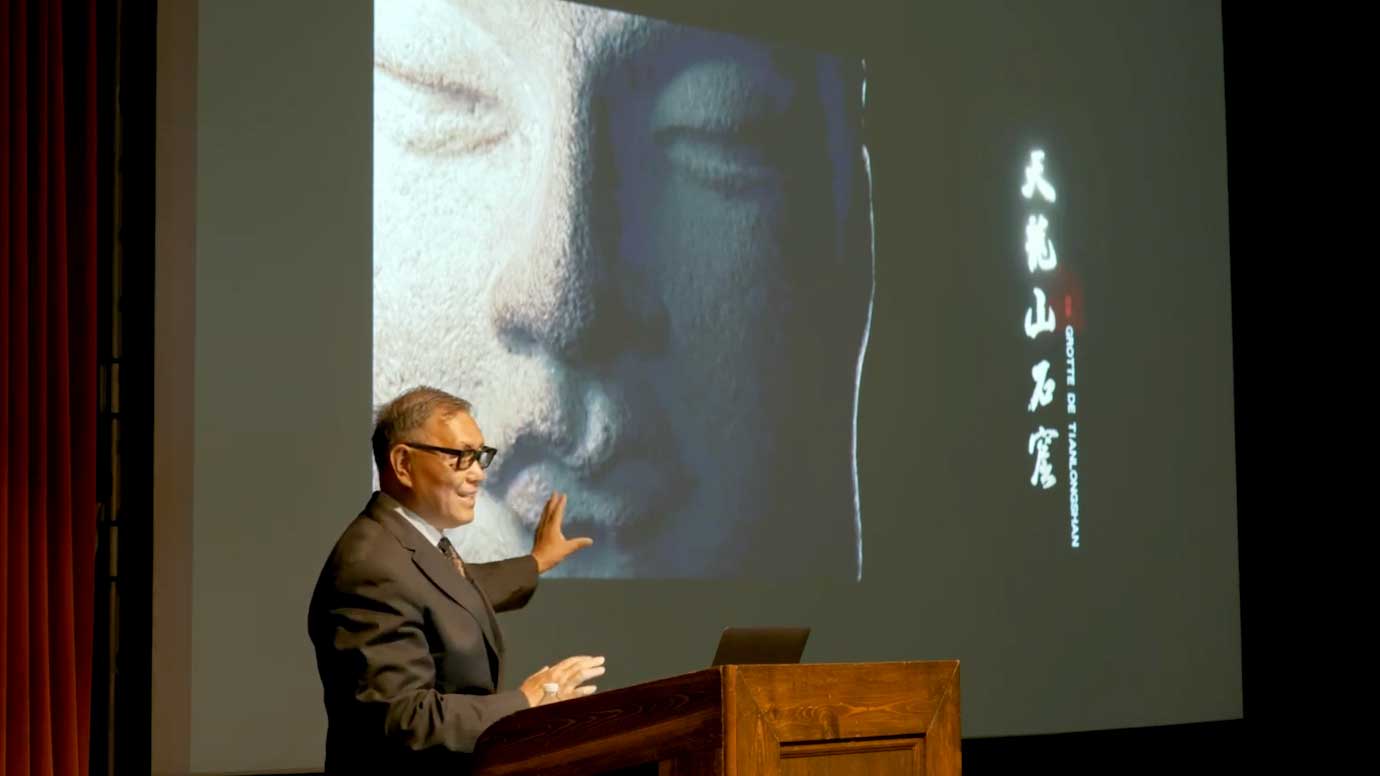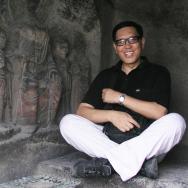What would it mean to rehabilitate Buddhist artworks pillaged by art dealers from grottoes in China a century ago? And what can art history as a discipline learn from such efforts? Prof. Wu Hung explored these topics in his Humanities Day keynote address on Oct. 16 at the University of Chicago.
An annual tradition at the University, Humanities Day celebrates the research of UChicago humanities scholars through lectures, discussions and performances that are open to the University community and the public.

A renowned scholar of both traditional and contemporary Chinese art who has curated numerous international exhibitions, Wu is the Harrie A. Vanderstappen Distinguished Service Professor of Art History. He also serves in a variety of other roles at UChicago, including director of the Center for the Art of East Asia; adjunct curator at the Smart Museum of Art; and special advisor to the provost for the arts in Asia.
His recent talk, titled “In the Name of Art—Destruction and Reconstruction,” highlighted the example of the Tianlongshan Grottoes (known in English as the Grottoes at Heavenly Dragon Mountain) in Shanxi Province, China. A large cave complex tucked into the sides of two mountains, the site once contained thousands of intact Buddhist sculptures from the Qi and Tang dynasties.
Though Buddhist sites in Asia have been destroyed as a consequence of religious and political turmoil, Wu explained, this site and others were actually desecrated in the early 20th century by art dealers who forcibly removed numerous sculptures from the sites where they had been situated for hundreds of years and sold them as individual pieces to European, North American and Japanese collectors.
Often, the pieces made their way to major museums, where they were stripped of the context that had surrounded them at Tianlongshan and used with hundreds of other works in exhibitions and collections that sought to provide comprehensive, comparative histories of Asian art.
Now, art historians in China and at UChicago are leading an effort to scan both the caves and museum holdings in major Western collections using 3D rendering technology, in an effort to identify and virtually restore some of the sculptures in situ by creating renderings of the caves that give modern viewers a sense of what they originally looked like.
“I would propose that today—while it is absolutely important to reinforce legal protection of original sites and preserve them with up-to-date methods—protections of heritage sites must also imply the shift of art historical focus from individual images to their physical and historical context,” Wu said. “In cases where the context has been violated, a serious effort must be made to reconstruct them and understand them through scholarship with the aid of new visual technology.”
Full descriptions of other lectures are available at the Humanities Day website. The following selection of talks are also now available to watch on YouTube.
Tangled Genealogies of a Cultural Identity, Or, What Was Madame Bovary Doing In Haiti? — Haun Saussy, University Professor of Comparative Literature
The Wild Man in the Green Swamp and Other Stories About Race in America — C. Riley Snorton, Professor of English Language and Literature, jointly appointed at the Center for Gender and Sexuality Studies
Queer Medievalism — Kris Trujillo, Assistant Professor of Comparative Literature
Hannah Arendt and the Humanities — David Rodowick, the Glen A. Lloyd Distinguished Service Professor in the Division of the Humanities









